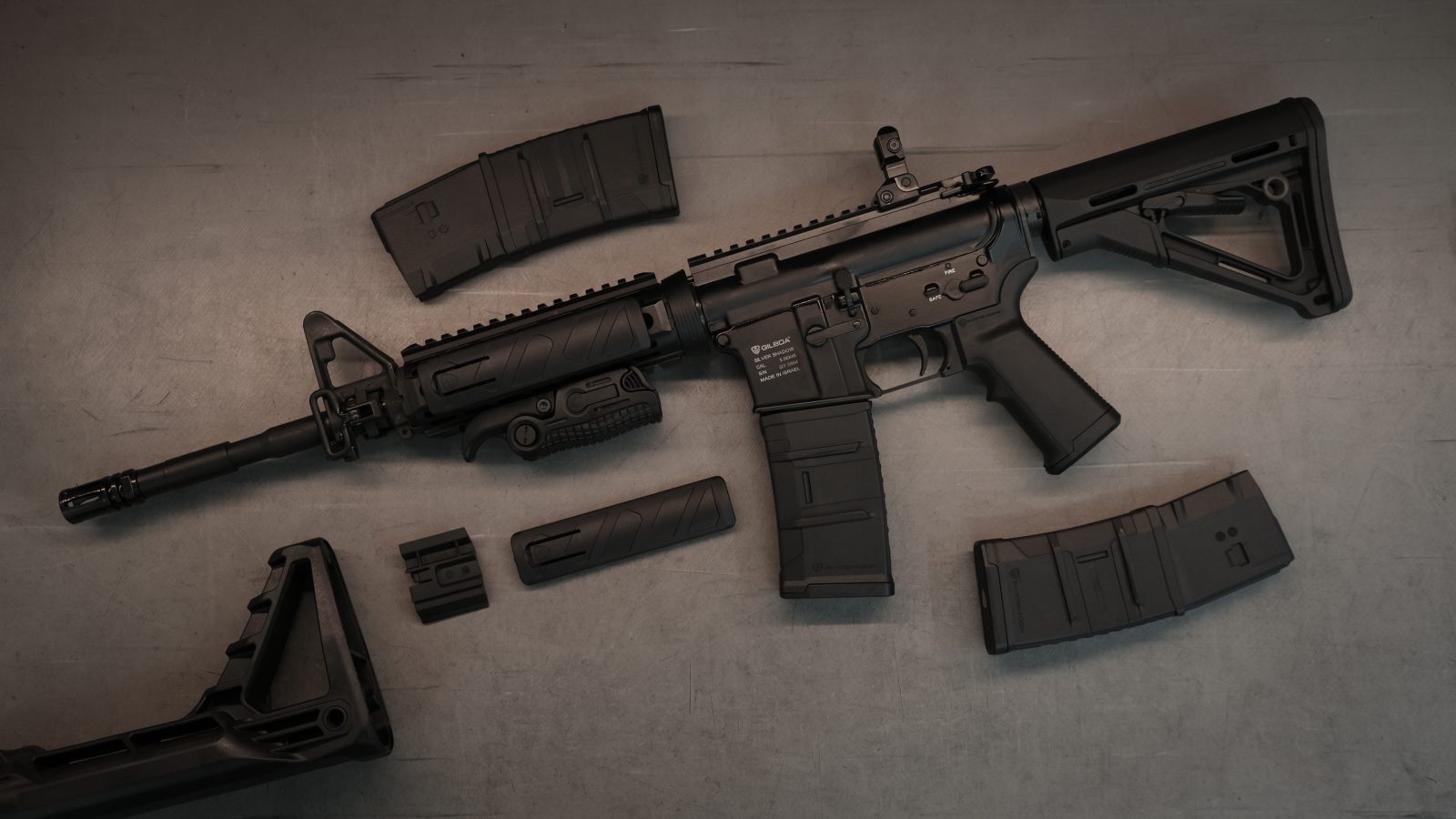Home » Blog » AR15 » Is an AR15 Considered an assault rifle? Understanding Definitions and Distinctions
Is an AR15 Considered an assault rifle? Understanding Definitions and Distinctions
Introduction In the ongoing discourse surrounding firearms in America, few topics ignite as much debate as the classification of the AR-15 rifle. Often at the center of discussions on gun control and Second Amendment rights, the AR-15’s designation as an assault rifle is a matter of considerable contention. This article aims to dissect the complexities […]
share article

Introduction
In the ongoing discourse surrounding firearms in America, few topics ignite as much debate as the classification of the AR-15 rifle. Often at the center of discussions on gun control and Second Amendment rights, the AR-15’s designation as an assault rifle is a matter of considerable contention. This article aims to dissect the complexities and nuances of this debate, steering clear of political biases to focus solely on the factual definitions, historical context, and technical specifications that distinguish assault rifles from other firearms. By examining the origins, design, and legislative classification of the AR-15, we endeavor to provide a comprehensive understanding of its place within the broader spectrum of firearms. Join us as we delve into the details that define the AR-15, separating myth from reality in the pursuit of clarity and factual accuracy.
What is an Assault Rifle?
The term “assault rifle” has become a focal point in discussions surrounding firearm legislation and control, yet its definition is often misunderstood or misrepresented. To demystify what constitutes an assault rifle, it’s essential to delve into both its historical origins and technical characteristics.
Historical and Technical Definition: The concept of the assault rifle emerged during World War II, with the (StG 44) frequently cited as the first weapon of its kind. The defining characteristics of an assault rifle include the capability for selective fire, the use of an intermediate cartridge, and a detachable magazine. Selective fire allows the operator to switch between modes, such as semi-automatic (single shot per trigger pull) and fully automatic (continuous firing until the trigger is released or ammunition is expended). The intermediate cartridge offers a balance between the long-range accuracy of full-sized rifle cartridges and the short-range firepower of pistol cartridges, providing a versatile ammunition type that is effective in a variety of combat scenarios.

Key Characteristics:
– Selective Fire: This feature is paramount in distinguishing assault rifles from other firearms, such as semi-automatic rifles, which do not offer an automatic firing mode.
– Intermediate Cartridge: Assault rifles use cartridges that strike a balance between power and control, designed to be effective at ranges up to 400 meters. This is in contrast to the larger cartridges used by traditional rifles, which are designed for longer-range engagements.
– Detachable Magazine: The use of detachable magazines in assault rifles facilitates quick reloading, a critical capability in combat situations.
Understanding these criteria is crucial in accurately categorizing firearms and discerning whether a particular model, such as the AR-15, fits the assault rifle designation. The next section will explore the AR-15’s design, functionality, and how it compares to the outlined characteristics of assault rifles, shedding light on its proper classification and dispelling common myths.
Understanding the AR15

The AR-15 is perhaps one of the most recognized rifles in the United States, known for its versatility, modularity, and widespread use in both recreational shooting and hunting. Despite its prominence, misconceptions about its capabilities and classification abound. To understand whether the AR-15 fits the definition of an assault rifle, it’s essential to examine its history, design, and technical specifications.
History and Design: The AR-15 was originally designed in the late 1950s by Eugene Stoner for ArmaLite, a small arms engineering company. The “AR” in its name stands for ArmaLite Rifle, not “assault rifle” or “automatic rifle” as is commonly misconceived. Its design was later sold to Colt, which marketed it to military services around the world. While the military version, known as the M16, features selective fire capabilities (including fully automatic or burst modes), the civilian AR-15 models are semi-automatic. This means one round is fired for each trigger pull, without the option for automatic fire.
Technical Specifications: The AR-15 is chambered in various calibers, but most commonly in .223 Remington or 5.56 NATO. It features a detachable magazine, typically holding between 5 and 30 rounds, and operates on a gas-operated, rotating bolt system. The rifle’s popularity is partly due to its modular design, allowing owners to customize parts including the barrel, handguards, and stock. This modularity makes the AR-15 highly adaptable for different uses, from sporting competitions to home defense.
Semi-automatic vs. Automatic Operation: The crucial distinction between the AR-15 and military assault rifles lies in its operating system. The AR-15’s semi-automatic operation requires a separate trigger pull for each shot, contrasting with the fully automatic or burst fire modes of assault rifles, where multiple rounds are fired with one trigger pull. This difference is significant, as the capability for automatic fire is a defining characteristic of assault rifles.
Military vs. Civilian Firearms: While visually similar to the M16 and M4 carbines used by military forces, civilian AR-15s lack the automatic firing capabilities of these military counterparts. The external similarities often lead to confusion in public discourse, but the functional differences are substantial and critical for classification purposes.
Understanding these aspects of the AR-15 clarifies that, by the technical and historical definition of an assault rifle, the civilian AR-15 does not qualify. It is a semi-automatic rifle, designed for and used by civilians, without the selective fire option that defines true assault rifles. The next section will delve into how the AR-15 is classified under current gun legislation and the implications of these classifications on the ongoing debate surrounding firearm regulations.
The AR15 and Gun Legislation
The classification and regulation of the AR-15 under gun legislation are pivotal points of discussion in the broader debate about firearm control in the United States. While the technical aspects of the AR-15 have been detailed, understanding how this firearm is viewed through the lens of the law offers further insight into its classification and the implications thereof.
Legal Classifications and the AR-15: In the United States, the legal definition of an assault rifle has varied over time and between jurisdictions. The Federal Assault Weapons Ban (AWB) of 1994, which expired in 2004, defined assault weapons based on specific features that included both cosmetic and functional elements, such as detachable magazines and features like pistol grips. However, the AR-15, in its most common configurations, does not feature select-fire capabilities, distinguishing it from assault rifles under military definitions. Most states follow a similar framework, focusing on specific features rather than the firearm’s inherent capabilities or design intentions.
Current Legislation: As of today, the AR-15 is legally classified as a semi-automatic rifle in most U.S. jurisdictions. This classification is based on its operation mechanism—requiring a separate trigger pull for each shot—without the capability for automatic fire. This distinction is crucial in legal contexts, as the designation of a firearm as an “assault weapon” can depend on state-specific legislation, which often targets specific features or capabilities that do not universally apply to all AR-15 models.
Impact of Legislation on Public Perception and Ownership: Public perception of the AR-15 is deeply influenced by its portrayal in media and politics, often being labeled as an “assault rifle” despite its technical and legal classification as a semi-automatic firearm. This discrepancy has fueled ongoing debates about gun control, ownership rights, and firearm safety in the United States. Legislation aimed at regulating or banning the AR-15 has been proposed and enacted in various states, reflecting a fragmented and highly contentious landscape of firearm regulation.
Looking Forward: The ongoing evolution of gun legislation, coupled with advances in firearm technology and shifts in public opinion, suggests that the legal status and classification of the AR-15 may continue to be a dynamic and debated issue. For firearm owners, enthusiasts, and policymakers, staying informed about legal definitions, court rulings, and legislative changes is essential for navigating the complex interplay between gun rights, public safety, and the legal framework governing firearms in the United States.
In summary, while the AR-15 shares certain characteristics with military-style assault rifles, its classification under current gun legislation is primarily as a semi-automatic rifle. This distinction, rooted in the firearm’s operational mechanism and specific features, underscores the importance of precise terminology and legal understanding in the ongoing debate over firearm regulation and safety.
Common Misconceptions
The debate surrounding the AR-15 often spawns various misconceptions, muddling public understanding and discourse. Addressing these inaccuracies is essential for fostering an informed conversation about firearms and their classifications. Here, we aim to clarify some of the most prevalent misunderstandings related to the AR-15.
Misconception 1: “AR” stands for “Assault Rifle” or “Automatic Rifle.”
– Fact: The “AR” in AR-15 stands for “ArmaLite Rifle,” after ArmaLite, the company that developed the firearm in the 1950s. This misconception is perhaps one of the most widespread and contributes significantly to confusion regarding the weapon’s capabilities and classification.
Misconception 2: The AR-15 is a military-grade assault rifle.
– Fact: The AR-15 is a civilian semi-automatic version of the military’s fully automatic M16. While they may look similar, the key difference lies in their functionality: the AR-15 lacks the selective fire option found in true assault rifles, meaning it cannot fire automatically.
Misconception 3: The AR-15 is significantly more powerful than other semi-automatic rifles.
– Fact: The AR-15 uses .223 Remington or 5.56 NATO cartridges, which are intermediate in power. Many hunting rifles, which are also semi-automatic, fire more powerful rounds. The misconception about the AR-15’s power likely stems from its military appearance rather than its ballistic capabilities.
Misconception 4: The AR-15 is the primary weapon used in most mass shootings.
– Fact: While the AR-15 has been used in several high-profile mass shootings, it is not the most commonly used weapon type in gun violence. Handguns are far more frequently used in violent crimes, including mass shootings. Focusing solely on the AR-15 can obscure the broader issue of gun violence and the variety of firearms involved.
Misconception 5: Banning the AR-15 would significantly reduce gun violence.
– Fact: The complexity of gun violence requires a multifaceted approach to reduction. While certain measures could potentially mitigate the impact of mass shootings, experts argue that a singular focus on banning specific firearm models like the AR-15 overlooks the comprehensive range of factors contributing to gun violence, including access to firearms, mental health considerations, and socioeconomic factors.
In dispelling these misconceptions, it’s crucial to approach the conversation about the AR-15 and similar firearms with a foundation of accurate information. Only through informed dialogue can meaningful progress be made toward addressing the concerns associated with firearm legislation, ownership, and use.
Conclusion
Navigating the complexities of firearm classifications and legislation reveals the importance of precise language and a deep understanding of both technical specifications and legal frameworks. Through our exploration of what constitutes an assault rifle, the specific characteristics and history of the AR-15, and its standing in current gun legislation, we have uncovered the layers that contribute to the widespread debate surrounding this firearm.
The AR-15, while often at the center of discussions on gun control, does not fit the traditional definition of an assault rifle due to its lack of selective fire capabilities. It is a semi-automatic rifle, meaning it requires a separate trigger pull for each round fired, contrasting with the fully automatic fire mode that defines assault rifles. This distinction is crucial in both legal contexts and public discourse, as inaccuracies and misconceptions can significantly impact legislation, public opinion, and policy-making.
Furthermore, gun legislation in various jurisdictions reflects an ongoing attempt to navigate the fine line between public safety and the rights of firearm owners. These laws, while aiming to address concerns over firearm misuse, often fall under scrutiny for their effectiveness and fairness, highlighting the need for informed, balanced discussions among lawmakers, experts, and the public.
Common misconceptions about the AR-15, fueled by its appearance and often sensationalized media coverage, underscore the necessity for education and factual accuracy in discussions about firearms. By dispelling myths and focusing on factual information, we can foster a more informed and constructive dialogue regarding gun control, ownership rights, and public safety.
As we conclude, it’s clear that the debate surrounding the AR-15 and its classification is not merely about semantics but touches on broader issues of policy, public perception, and the responsible use of firearms. By striving for accuracy, engaging in informed discourse, and considering the multifaceted aspects of firearm legislation and culture, we can work towards policies that respect individual rights while prioritizing the safety and well-being of the community at large.
